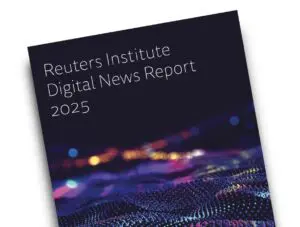Over the past 10 years, we have evolved alongside the transformations of our industry. From a content writing service, we have grown into a fully integrated partner, combining editorial expertise with multimedia capabilities.
Artificial Intelligence at The Editorialist
PREAMBLE
First and foremost, we see three major limitations in the use of automated text generation tools:
- Reliability of information: Artificial intelligence produces “probable” rather than “factual” content, meaning that all data and figures must be verified – a significant proportion of which often proves inaccurate.
- Copyright: Linked to the first limitation, information is not sourced, which greatly increases the legal risk of unintentionally appropriating someone else’s work.
- Confidentiality of client information: Any data or text entered into an AI tool is at significant risk of exposure or disclosure.
OUR PRACTICES
- We do not publish any content generated by AI.
All content produced for our clients – as well as for The Editorialist – is written by our in-house teams and/or our network of specialist journalists.
At present, AI-generated outputs can contain errors and often lack precision. Most of the information provided is unsourced. For these reasons, we cannot regard AI as a reliable resource.
- We may use AI during brainstorming phases
During research stages, prior to actual content production, AI tools may be used to broaden the scope of ideas. Any suggestions provided by AI are always reviewed and validated by our editorial leads.
- We are developing in-house expertise on AI
Our teams are trained in current best practices, tools, and applications, and can contribute to our clients’ thinking on the subject.
Our beliefs
The editorial and sector expertise of our teams is at the heart of our content production. What we deliver carries a level of added value that only human insight can guarantee:
- Intelligent story angles: we maintain constant monitoring of news and developments across our clients’ industries.
- Reliable, sourced information: ensuring credibility through the citation of all sources.
- Editorial precision: mastery in structuring information, and careful attention to avoiding repetition, clichés, or awkward phrasing – all elements that enrich and smooth the reading experience.
- Context and perspective: the ability to frame information within its broader context.
- Access to “off-the-radar” sources: paid studies, expert interviews we commission, internal benchmarks, and more.
- Deep client understanding: sector-specific expertise shared by several key specialists within the agency, ensuring precise alignment with client expectations.
We will continue to explore the opportunities offered by artificial intelligence to better meet our clients’ needs – without ever compromising our editorial standards or our commitment to excellence.
Watch & trends
Newsroom
Audiences, distribution, intelligence articles, Top Voices interviews – Our experts analyse and unpick the latest editorial trends.


